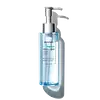What's inside
What's inside
 Key Ingredients
Key Ingredients

 Benefits
Benefits

 Concerns
Concerns

 Ingredients Side-by-side
Ingredients Side-by-side

Water
Skin ConditioningPotassium Cocoyl Glycinate
Panthenol
Skin ConditioningPotassium Cocoate
EmulsifyingAcrylates/Steareth-20 Methacrylate Crosspolymer
Sodium Lauroamphoacetate
CleansingCentella Asiatica Extract
CleansingGlycerin
HumectantDecyl Glucoside
CleansingCeramide NP
Skin ConditioningCeramide Ns
Skin ConditioningCeramide As
Skin ConditioningCeramide EOP
Skin ConditioningCeramide AP
Skin ConditioningSodium Polyaspartate
HumectantButylene Glycol
HumectantPentylene Glycol
Skin ConditioningPropanediol
SolventMethyl Diisopropyl Propionamide
MaskingEthyl Menthane Carboxamide
TonicMenthyl Lactate
MaskingHydroxypropylcellulose
EmulsifyingIsopropyl Palmitate
EmollientTrehalose
HumectantSerine
MaskingAlgin
MaskingCaprylyl Glycol
EmollientSodium Hyaluronate
HumectantPullulan
Disodium Phosphate
BufferingPotassium Phosphate
BufferingHydrogenated Lecithin
EmulsifyingPolyglyceryl-10 Stearate
Skin ConditioningEthylhexylglycerin
Skin ConditioningWater, Potassium Cocoyl Glycinate, Panthenol, Potassium Cocoate, Acrylates/Steareth-20 Methacrylate Crosspolymer, Sodium Lauroamphoacetate, Centella Asiatica Extract, Glycerin, Decyl Glucoside, Ceramide NP, Ceramide Ns, Ceramide As, Ceramide EOP, Ceramide AP, Sodium Polyaspartate, Butylene Glycol, Pentylene Glycol, Propanediol, Methyl Diisopropyl Propionamide, Ethyl Menthane Carboxamide, Menthyl Lactate, Hydroxypropylcellulose, Isopropyl Palmitate, Trehalose, Serine, Algin, Caprylyl Glycol, Sodium Hyaluronate, Pullulan, Disodium Phosphate, Potassium Phosphate, Hydrogenated Lecithin, Polyglyceryl-10 Stearate, Ethylhexylglycerin
Water
Skin ConditioningGlycerin
HumectantDisodium Cocoyl Glutamate
CleansingPropylene Glycol
HumectantSodium Lauroyl Sarcosinate
CleansingAcrylates Copolymer
Sodium PCA
HumectantPEG-8
HumectantCocamidopropyl Betaine
CleansingCitric Acid
BufferingSodium Benzoate
MaskingPanthenol
Skin ConditioningSodium Chloride
MaskingChlorphenesin
AntimicrobialGlyceryl Polyacrylate
Sodium Hydroxide
BufferingGlycyrrhiza Glabra Root Extract
BleachingDisodium EDTA
Parfum
MaskingBetaine
HumectantPentylene Glycol
Skin ConditioningBeta-Glucan
Skin ConditioningSodium Lactate
BufferingPCA
HumectantCaprylyl Glycol
EmollientSerine
MaskingAlanine
MaskingGlycine
BufferingSodium Ascorbyl Phosphate
AntioxidantGlutamic Acid
HumectantLysine Hcl
Skin ConditioningThreonine
Arginine
MaskingProline
Skin ConditioningWater, Glycerin, Disodium Cocoyl Glutamate, Propylene Glycol, Sodium Lauroyl Sarcosinate, Acrylates Copolymer, Sodium PCA, PEG-8, Cocamidopropyl Betaine, Citric Acid, Sodium Benzoate, Panthenol, Sodium Chloride, Chlorphenesin, Glyceryl Polyacrylate, Sodium Hydroxide, Glycyrrhiza Glabra Root Extract, Disodium EDTA, Parfum, Betaine, Pentylene Glycol, Beta-Glucan, Sodium Lactate, PCA, Caprylyl Glycol, Serine, Alanine, Glycine, Sodium Ascorbyl Phosphate, Glutamic Acid, Lysine Hcl, Threonine, Arginine, Proline
 Reviews
Reviews

Ingredients Explained
These ingredients are found in both products.
Ingredients higher up in an ingredient list are typically present in a larger amount.
Caprylyl Glycol is a humectant and emollient, meaning it attracts and preserves moisture.
It is a common ingredient in many products, especially those designed to hydrate skin. The primary benefits are retaining moisture, skin softening, and promoting a healthy skin barrier.
Though Caprylyl Glycol is an alcohol derived from fatty acids, it is not the kind that can dry out skin.
This ingredient is also used as a preservative to extend the life of products. It has slight antimicrobial properties.
Learn more about Caprylyl GlycolGlycerin is already naturally found in your skin. It helps moisturize and protect your skin.
A study from 2016 found glycerin to be more effective as a humectant than AHAs and hyaluronic acid.
As a humectant, it helps the skin stay hydrated by pulling moisture to your skin. The low molecular weight of glycerin allows it to pull moisture into the deeper layers of your skin.
Hydrated skin improves your skin barrier; Your skin barrier helps protect against irritants and bacteria.
Glycerin has also been found to have antimicrobial and antiviral properties. Due to these properties, glycerin is often used in wound and burn treatments.
In cosmetics, glycerin is usually derived from plants such as soybean or palm. However, it can also be sourced from animals, such as tallow or animal fat.
This ingredient is organic, colorless, odorless, and non-toxic.
Glycerin is the name for this ingredient in American English. British English uses Glycerol/Glycerine.
Learn more about GlycerinPanthenol is a common ingredient that helps hydrate and soothe the skin. It is found naturally in our skin and hair.
There are two forms of panthenol: D and L.
D-panthenol is also known as dexpanthenol. Most cosmetics use dexpanthenol or a mixture of D and L-panthenol.
Panthenol is famous due to its ability to go deeper into the skin's layers. Using this ingredient has numerous pros (and no cons):
Like hyaluronic acid, panthenol is a humectant. Humectants are able to bind and hold large amounts of water to keep skin hydrated.
This ingredient works well for wound healing. It works by increasing tissue in the wound and helps close open wounds.
Once oxidized, panthenol converts to pantothenic acid. Panthothenic acid is found in all living cells.
This ingredient is also referred to as pro-vitamin B5.
Learn more about PanthenolPentylene glycol is typically used within a product to thicken it. It also adds a smooth, soft, and moisturizing feel to the product. It is naturally found in plants such as sugar beets.
The hydrophilic trait of Pentylene Glycol makes it a humectant. As a humectant, Pentylene Glycol helps draw moisture from the air to your skin. This can help keep your skin hydrated.
This property also makes Pentylene Glycol a great texture enhancer. It can also help thicken or stabilize a product.
Pentylene Glycol also acts as a mild preservative and helps to keep a product microbe-free.
Some people may experience mild eye and skin irritation from Pentylene Glycol. We always recommend speaking with a professional about using this ingredient in your routine.
Pentylene Glycol has a low molecular weight and is part of the 1,2-glycol family.
Learn more about Pentylene GlycolSerine is an amino acid naturally found in our body. Our bodies use amino acids to create protein.
Amino-acids help give keep our skin hydrated. They play an important role in the skin barrier, which keeps the skin plump and firm.
Serine is a non-essential amino acid, meaning we don't need to obtain it from eating foods.
Learn more about SerineWater. It's the most common cosmetic ingredient of all. You'll usually see it at the top of ingredient lists, meaning that it makes up the largest part of the product.
So why is it so popular? Water most often acts as a solvent - this means that it helps dissolve other ingredients into the formulation.
You'll also recognize water as that liquid we all need to stay alive. If you see this, drink a glass of water. Stay hydrated!
Learn more about Water